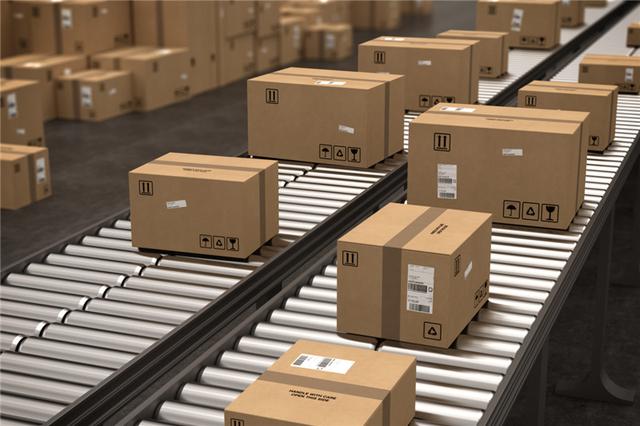How to Smartly Ship Chinese Home Appliances to the UK: Save Big on Import Fees & Customs
Introduction: Why Chinese Home Appliances Are Worth the Hype (and How to Get Them Affordably)
The global appeal of Chinese home appliances is undeniable. From cutting-edge smart TVs and energy-efficient washing machines to affordable yet high-quality kitchen gadgets, China’s appliance market offers unbeatable value. But for European and North American residents who want to bring these products home, the challenge lies in navigating import fees, customs hurdles, and shipping logistics. This guide will show you how to consolidate shipments, avoid unnecessary costs, and streamline the process of getting Chinese appliances to the UK (or other regions) without breaking the bank.
Whether you’re an expat looking to recreate a taste of home or a savvy shopper hunting for budget-friendly upgrades, this article covers everything you need to know about smart shipping, tax loopholes, and trusted providers. Let’s dive in!
Key Benefits of Buying Chinese Home Appliances
- Cost-Effective Quality: Chinese brands like Hisense, Midea, and TCL offer advanced features (e.g., AI-powered refrigerators, ultra-efficient air conditioners) at half the price of Western equivalents.
- Innovation at Scale: China leads in smart home tech, with IoT-enabled appliances that integrate seamlessly with global ecosystems like Google Home or Amazon Alexa.
- Wide Product Range: From compact apartment-friendly designs to commercial-grade equipment, there’s something for every need—and budget.
But wait! Before you start shopping, understand how importing works. The UK’s strict customs rules and tariffs can quickly eat into your savings if you’re unprepared. That’s where strategic planning comes in.
Step 1: Choose the Right Shipping Method
Air Freight vs. Sea Freight: Pros and Cons
- Air Freight: Faster (7–14 days) but expensive. Ideal for small, urgent shipments.
- Sea Freight: Affordable but slower (45–60 days). Best for bulky items like refrigerators or washing machines.
Tip: For large orders, sea freight saves 70–80% on shipping costs compared to air. Use a consolidation service to fill a shared container and split costs.
Step 2: Consolidate Shipments to Minimize Fees
Import fees (VAT, customs duty, handling charges) are calculated based on the total value of your shipment. Here’s how to reduce them:
- Bundle Multiple Orders: Instead of shipping individually, combine items from different sellers into one package. This lowers the per-unit cost of fees.
- Example: If you buy a TV (£300) and a vacuum (£100) separately, you’ll pay fees on £400. Consolidated, you might pay fees on £350 after negotiating with the seller.
- Use a Chinese Freight Forwarder: Companies like Parclify, ShipBob, or ChinaDivision specialize in consolidating packages from multiple vendors. They also handle customs documentation, reducing the risk of delays.
- Leverage the £135 VAT Threshold: The UK allows imports under £135 (including shipping) to bypass VAT and customs duties. Split higher-value orders into multiple shipments to stay under this limit.
Step 3: Navigate Customs Like a Pro
Avoid These Common Mistakes
- Overvaluing Items: Declaring a higher value than necessary increases taxes. Research fair market prices for similar products in the UK.
- Missing Documentation: Always include a detailed packing list and commercial invoice. Ambiguous descriptions trigger inspections.
- Ignoring Prohibited Items: Some appliances (e.g., gas-powered generators) require special permits. Check the UK’s HM Revenue & Customs (HMRC) guidelines.
Tax-Saving Strategies
- Claim Personal Exemptions: If you’re moving goods for personal use (not resale), you’re eligible for lower rates. Keep receipts to prove intent.
- Use EU-China Trade Agreements: If you’re in the EU, certain goods qualify for reduced tariffs. Check the EU’s Taric database for up-to-date rules.
Step 4: Choose Reliable Shipping Partners
Not all couriers are created equal. Here’s what to look for:
- Experience with Appliances: Ensure the provider handles heavy, fragile items. Look for climate-controlled warehouses and insurance options.
- Transparent Pricing: Avoid hidden fees. Use calculators on sites like DHL eCommerce or Asendia to estimate costs.
- Tracking and Support: Opt for end-to-end tracking and 24/7 customer service. Companies like YunExpress or Cainiao Super Economy specialize in China-to-UK routes.
Recommended Services:
- Parcel Monkey: Compares rates across 250+ couriers.
- ShipHero: Offers consolidation and customs assistance.
- UK Mail Forwarding: Provides a UK address for package consolidation.
Step 5: Post-Arrival Tips
- Inspect for Damage: Open boxes immediately. Report any issues to the shipper within 48 hours.
- Voltage Compatibility: Most Chinese appliances use 220V. Invest in a step-down transformer or dual-voltage model to avoid frying your electronics.
- Warranty Considerations: Register products with local service centers if applicable. Some brands offer international warranties.
Case Study: A Successful Shipment from Shenzhen to London
Scenario: Sarah, a UK resident, orders a Hisense fridge (£400), a Roborock robot vacuum (£300), and a Mijia air fryer (£50) from Chinese retailers.
- Milestone 1: She uses ShipBob to consolidate the items, paying £150 for sea freight instead of £300 for individual air shipments.
- Milestone 2: By splitting the order into two packages (£400 and £350), she avoids VAT on the second shipment.
- Total Saved: £200+ in import fees and £150 in shipping.
Final Tips: Maximize Value, Minimize Hassle
- Negotiate with Sellers: Ask Chinese retailers to remove promotional materials or branding to avoid attracting attention during customs checks.
- Join Expat Forums: Sites like Reddit’s r/UKExpats or Expat.com share real-time advice on shipping hacks.
- Time Your Shipment: Avoid peak holiday seasons when customs delays are longer.

